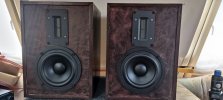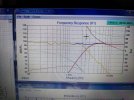
Not sure if you care, but I found this to be quite interesting and unexpected. Only the top two octaves play fundamentals above 1khz. The rest of the audio spectrum is typically filled with room acoustics and natural harmonics by recordings. By playing C6, you produce 1khz at the fundamental, and harmonics from the instrument and room at 2 and 3khz (and higher). This has really de emphasized mid and treble drivers in my mind and allows me to think of speaker tunings above 1khz as really being adjustable based on need and preference for acoustic information. Always linear, of course, but the line makes so much more sense now.
I still do not understand what would be your major concern and/or suggestion in your above post.
The combinations of key note tone and higher even and odd harmonics tones always give "individual sound signature" like e.g. female vocal, violin, cello, harpsichord, piano, etc. By using many sound analysis tools (sound fingerprint representations), you can objectively observe the sound signatures; such as using 3D gain-time-Fq color spectrum of Adobe Audition 3.0.1.
If you would be interested, please visit my thread entitled "An Attempt Sharing Reference Quality Music Playlist: at least a portion and/or whole track being analyzed by 3D color spectrum of Adobe Audition" and the linked many posts thereof im my project thread where you can look at many 3D gain-time-Fq color spectrums representing "sound signatures" or "sound fingerprints".
Last edited:


